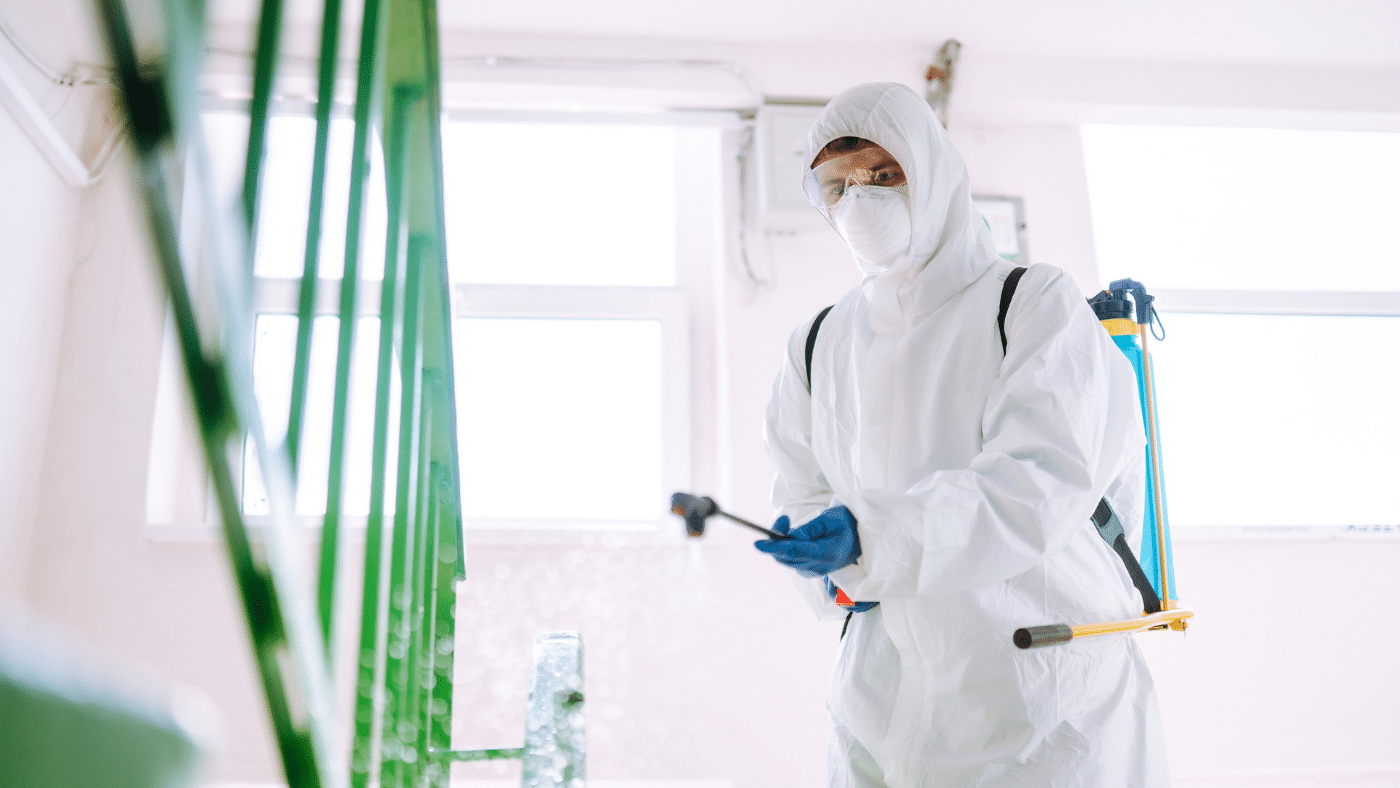While it may seem that the dangers of methamphetamine and fentanyl fall outside the scope of the environmental insurance industry, there is growing awareness that these drugs do in fact present a challenge to the industry. Due to the high risk of accidental overdose due to exposure when working in areas potentially contaminated by production or use of methamphetamine and fentanyl, remediation practices must be thorough and systematic.
In this post, we address
- What methamphetamine and fentanyl are and how and where these drugs are commonly produced
- The environmental impact that these drugs present to construction companies and sureties
- Best practices for mitigating the risks presented by methamphetamine and fentanyl
Drug Facts
Methamphetamine (meth) is a highly addictive stimulant that affects the central nervous system when consumed. In its crystalized form, methamphetamine looks similar to small pieces of glass fragments. This regulated stimulant increases the amount of dopamine in the brain, which controls body movement, motivation, and reinforcement of rewarding behaviors. Illegal production is an environmental concern as the toxicity from the chemicals used in production can remain in the environment several years after the manufacturing laboratory has shut down.
Fentanyl is a synthetic opioid similar to morphine but is 50 to 100 times more potent and works by binding to the body’s opioid receptors. These receptors are found in areas of the brain that control pain and emotions. Effects include extreme happiness, sedation, nausea, confusion and other symptoms. Synthetic opioids are the most common drugs involved in overdose deaths in the United States. Just two milligrams of fentanyl can be lethal depending on a person’s body size, tolerance and past usage.
Who and Where: Sources and Production
Currently, most methamphetamine in the U.S. is produced and distributed by transnational criminal organizations in Mexico. The Combat Methamphetamine Epidemic Act of 2005 drastically reduced domestic illegal production. The act included requirements for pharmacies to keep logs of purchases of products containing pseudoephedrine and limit the amount that could be purchased per day. Based on data from the National Institute on Drug Abuse, between 2010 and 2017 the number of meth lab incidents fell by 80%. Additionally, data on drug seizures indicate that most domestic production is now conducted in small labs that produce two ounces or less using common household items. Meth can be produced with common domestic products that can be obtained legally, such as paint thinners, Coleman fuel, rubbing alcohol, batteries and decongestants. All of these present environmental hazards.
Typically, fentanyl also comes from transnational criminal organizations with a supply chain that begins in China where precursor chemicals are obtained and then shipped to Mexico. Once in Mexico, the chemicals are produced into fentanyl tablets and smuggled into the U.S. In recent years, India has emerged as another supplier of precursor chemicals. According to data from the U.S. Department of Justice, fentanyl seizures increased 272% from 2019 to 2022.
The Far-Reaching Environmental Impacts of Methamphetamine and Fentanyl
Environmental impacts from methamphetamine and fentanyl can be found virtually anywhere, but most often they are found in rental homes, storage sheds, vacant buildings, apartments, rest areas, RV’s and hotel rooms.
According to the Connecticut Department of Health, for each pound of meth produced, five to six pounds of toxic waste are generated. Residue from the cooking process can contaminate all surfaces of the property; impacted areas could include furniture, walls, carpeting, flooring, clothing, and appliances. Leftover chemicals and by-products are often poured down home drains, storm drains or directly onto the ground, contaminating drinking water wells, septic systems, and soil. Chlorinated solvents and other toxic byproducts used in production pose long-term hazards as they can persist in soil and groundwater for years. The labs are typically constructed with crude materials and apparatuses, and because production is not conducted in a controlled setting, the potential to contaminate surfaces of the space are very high.
The Slowly Evolving Regulatory Landscape for Remediation
The Methamphetamine Remediation Research Act of 2007 formally enabled the U.S. Environmental Protection Agency (EPA) to research and develop remedial strategies for meth and fentanyl contamination. However, these strategies are not enforceable and are only used as guidelines. Currently, there are no comprehensive federal regulations for remediation. Nearly half of the country (22 states) do not have any laws regarding remediation. Ten states have cleanup laws focused only on meth, and 16 states have cleanup laws that only apply to drugs in general. Only two states have laws targeting fentanyl; however, the regulations are unclear. California, for example, has an established maximum detection concentration level, but offers no guidance on cleanup procedures.
Reducing the Risk of Remediation
The following remediation approach was developed by the U.S. EPA, but currently is not enforceable in the U.S. With many varying guidelines and regulations, contractors should research the specific state regulations (if any) where remediation is occurring so the proper protocols can be applied.
In cases where methamphetamine was produced, it is recommended that individuals involved in the cleanup have their 40-hour Hazardous Waste Operations & Emergency Response (HAZWOPER) certificate and the appropriate level of Personal Protective Equipment (PPE) for site-specific conditions. In most cases, appropriate PPE includes Level A, and should not be lower than Level B. Additionally, prior to remediation commencing, law enforcement officials should clear the structure of potential hazards left behind by laboratory operators.
Following any law enforcement investigations, it is generally recommended to begin gross removal of bulk chemicals, equipment apparatuses and any obviously stained furniture or porous materials. Remediation contractors should ensure that the property is secure to prevent any unauthorized entry resulting in accidental exposure. It is recommended to ventilate the property by opening doors and windows, using fans and blowers, and/or negative air units with High Efficiency Particulate Air (HEPA) filters. Following completion, it is generally advised to conduct a preliminary assessment and pre-remediation sampling as part of developing a cleanup plan. As remediation progresses, the property should be cleaned from back to front, sealing completed areas throughout remedial cleaning to avoid potential recontamination.
It is recommended that contractors clean and seal the heating, ventilation and air conditioning (HVAC) system at all openings and not run the system until remediation is complete to prevent recontamination. To conduct remediation, contractors should complete cleaning of the walls, floors, ceiling and non-porous furniture with a detergent-water solution to remove most contamination. Generally, the water generated from wet wiping will not be considered hazardous waste and can be disposed of with domestic waste or general construction waste; however, contractors should defer to state guidelines for testing requirements. Following the initial washing, it is advised to complete HEPA vacuuming on hard surfaces, flush all plumbing with clean water as it is common for chemicals and residual sludge to be disposed of down drains, and conduct post-remediation sampling. An encapsulate may be applied but should never be used as a substitute to cleaning surfaces. Following remediation, drains should be flushed again (if any wastewater generated from cleaning was disposed of down in home drains), the space should be ventilated and a final report documenting remedial actions and any sampling completed should be prepared.
Recommended fentanyl remediation is similar to methamphetamine cleanup; however, it is advised to use a sprayer to apply a neutralization solution to all areas of the building from floor to ceiling of all porous and non-porous items – even items that will be disposed of due to the high toxicity of fentanyl. This is important as the lethal dose of fentanyl is extremely low. The neutralization solution will typically consist of a low pH soap and water. Additionally, it is recommended that qualified contractors spray an area three feet beyond the expected contaminated area. Once spraying is complete, HEPA vacuuming and damp wiping and mopping of all hard surfaces – until no residue remains – is recommended.
How Can VERTEX Help?
VERTEX has a team of environmental professionals, including Certified Industrial Hygienists, with the expertise and experience to:
- inspect methamphetamine/fentanyl contaminated properties.
- determine the extent of the impact and the necessary response activities.
- identify any potentially responsible parties.
- determine appropriate remedial efforts and the regulatory reporting necessary to correct the environmental condition.
- evaluate costs for reasonableness.
VERTEX’s strategic nationwide locations allow us to mobilize on behalf of our clients to identify and mitigate challenges associated with pollution claims.
For more information, contact Ashton Gant, at agant@vertexeng.com.




